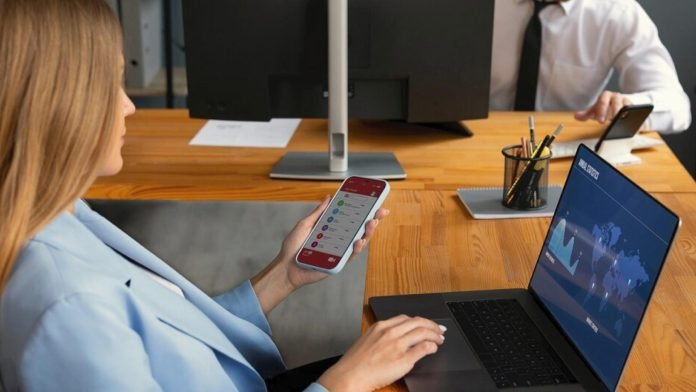Our economy is driven from the frontline.
There are more than 100 million US workers in frontline roles, representing approximately 70% of the total labor force. Without their vast contribution, there would be no desk-jobs for corporate decision-makers to occupy.
Over the past few decades, HR and people leaders within the majority of corporations have made huge efforts to recognize and reward frontline workers for their contribution. They want their people to feel valued and part of the organizational culture; it improves satisfaction and retention; it leads to improved service quality and productivity; it creates better jobs and keeps labor costs under control. Ensuring frontline workers’ happiness is fundamental to growing a profitable and sustainable business.
Employers have launched benefits programs and loyalty schemes, undertaken listening surveys, and rolled out employee wellbeing apps. They’ve tried out myriad technologies – from e-learning and team scheduling platforms to messaging and collaboration tools – designed to ‘engage’ their frontline employees and keep them connected to the mothership.
So why isn’t any of this working?
The digital divide at the heart of the labor force
While the pace of digital transformation in the enterprise has been astounding, the technologies most organizations purchase today are designed for desk-based workers who are permanently online and have ready access to IT support and/or relevant training resources.
The modern enterprise tech ecosystem is incompatible with the realities of frontline work – where mobile ease of use and accessibility are pivotal to driving uptake. These tools simply don’t work effectively when rolled out to staff in hospitals, on factory floors or in retail stores – employees who are time-poor, constantly on their feet and rarely anywhere near a desktop computer.
It’s little wonder that more than one-third of frontline healthcare workers can’t easily access workplace systems on their mobile devices. Two-thirds of workers report not even knowing how to use their corporate Intranet.
The situation is similar across all frontline industries – from retail and logistics to construction and transportation.
This lack of frontline connectivity creates inequality of opportunity, information and influence within the workplace, the result being that frontline workers don’t enjoy the same sense of value and belonging as their office-based peers.
Nor do they enjoy the same prospects. According to McKinsey, while three-quarters of frontline workers want to be promoted, today, fewer than one in four employees achieves this goal. It’s a sobering statistic reinforcing the notion that frontline workers get jobs while office workers get careers.
The right technology can make all the difference
Frontline workers aren’t averse to using technology. As consumers, their digital world is immediate and enriching, driven by intuitive smartphone apps, instant notifications and a sense of always having the tools they need at their fingertips. Yet in their jobs, the current digital experience is slow and disjointed.
To close the digital divide, organizations must deploy technologies specifically designed with the on-the-go frontline working experience in mind. For example, offering single sign-on, mobile-enabled access to all applications will greatly improve accessibility. Building a content hub can make it easy for all workers to access important information. Simple mobile forms can replace paper trails and help workers improve efficiency, as well as eradicate convoluted IT support tickets so that workers are not put off asking for assistance.
Similarly, encouraging frontline participation in organizational culture can be cultivated through digital tools that make ongoing interaction easy – from any device or location. Secure mobile-first chats facilitate better communication, while mandatory reads can ensure employees don’t inadvertently delete important updates. Even simple changes like introducing an engaging organizational News Feed can help employees feel more involved. For example, Colorado-based Care Synergy has deployed a frontline employee super-app to send timely, consistent company updates and encourage employees to use and create chat channels to bring the team together. Care Synergy’s ‘Gratitude’ channel is one of the most popular, used by employees to give kudos and recognition to their co-workers in ways that weren’t possible before.
Understanding the digital experience of frontline workers requires active listening and encouraging feedback. Organizations can replace traditional paper surveys with regular, concise digital Pulse surveys to build trust and yield relevant data that can be used to iteratively improve the experience.
Finally, embracing policies such as Bring Your Own Device (BYOD) can enhance accessibility too, but organizations must be mindful of potential disparities, like varying ISP quality or differences in State laws. For example, in California, Labor Code section 2802 requires employers to reimburse employees for any BYOD costs incurred.
The role of organizational culture in digital inclusion
However, creating a digitally inclusive environment for frontline workers goes beyond technology adoption. It requires a cultural shift within organizations – one that values and actively supports the digital empowerment of every employee, regardless of role.
People and HR leaders must champion digital inclusion as a strategic priority, ensuring that frontline workers are not just recipients of technology but active participants in the digital transformation journey.
Organizations can foster this culture by promoting digital literacy programs, encouraging peer-to-peer learning, and recognizing the unique contributions of frontline workers. Involving these employees in the decision-making process around technology adoption can also lead to more effective and user-friendly solutions.
Closing the digital divide for frontline workers is not just a matter of technological advancement but a fundamental issue of workplace equity. By investing in the right tools, training, and cultural initiatives, organizations can ensure their frontline workforce is equipped to thrive in the digital age.
Explore HRtech News for the latest Tech Trends in Human Resources Technology And Expand your reach with guest posts and link collaboration.
ABOUT THE AUTHOR

Sean Nolan
Driven by his early encounters with remote work challenges, Boston-based CEO Sean Nolan co-founded Blink in 2014. This all-in-one “super-app” empowers frontline workers with the digital tools, connections, and resources they need on their personal phones. Blink bridges the gap between management and millions of individuals across industries, from bus drivers to healthcare workers, fostering engagement, belonging, and a 26% reduction in staff turnover. With over 300 clients, and used seven times daily by 300,000+ workers, Blink is revolutionizing the frontline experience, one tap at a time.













